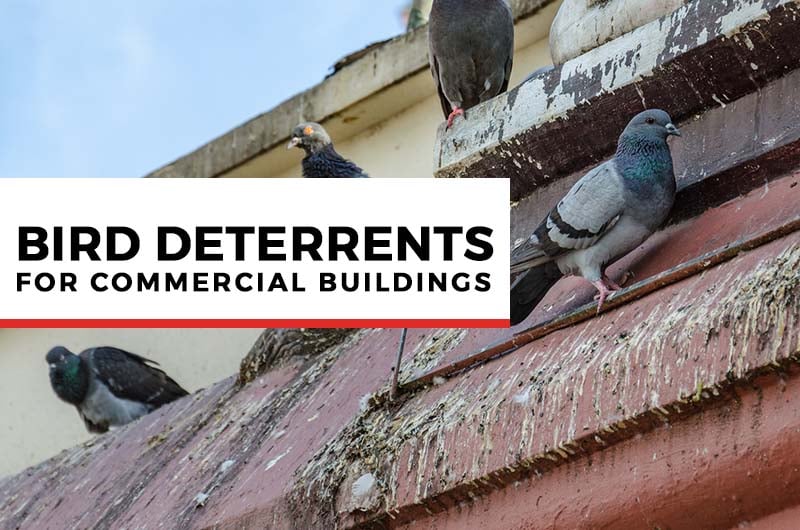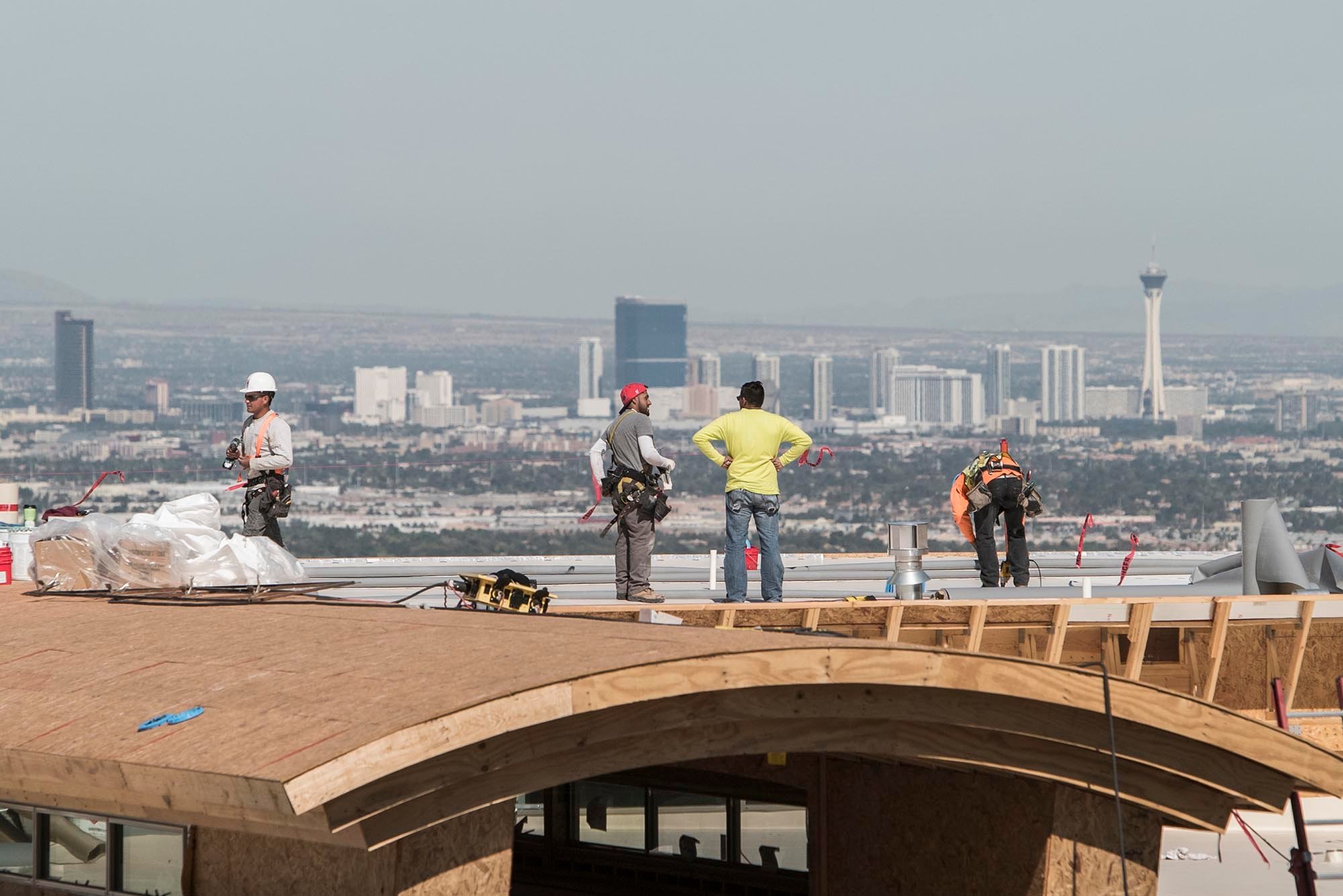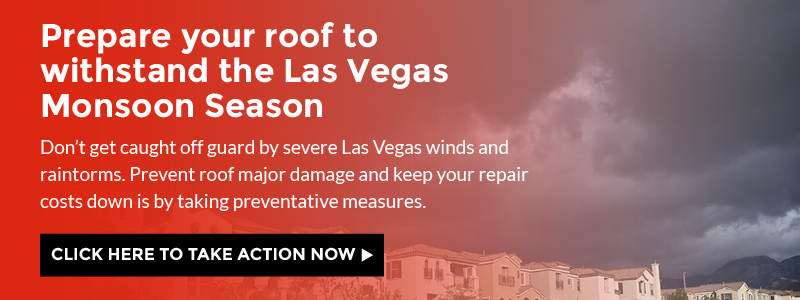
Birds are a commonly overlooked cause of roof damage. Understanding how birds damage roofs, identifying bird-caused damage, and familiarizing yourself with effective bird deterrents will help you avoid the high costs of roof repair or replacement.

Can Birds Cause Damage to Roofs?
Yes. Birds are a common cause of roof damage in three primary ways.
- Bird Droppings - Bird droppings are acidic and erode most types of roofing material. Whether made of asphalt or metal, your roof is susceptible to damage from bird droppings.
- Nesting - When birds nest on a roof, they often impair the water drainage system of a roof. When a roof’s water drainage system is damaged, leaks can occur, and a roof can begin to rot. Moreover, nests are a fire hazard.
- Pecking - Bird pecking can cause puncture damage.
How Can I Identify Bird Damage to My Building's Roof?
If birds are frequently on your roof, then you should be concerned about bird damage.
If your roof is a nesting place for birds or covered in bird droppings, then some degree of roof damage is likely. Visible signs of erosion, roof leaks, and rot can all indicate bird damage. Because some of these problems can occur due to factors other than birds, the best way to determine whether birds are damaging your roof is to consult with an experienced roofing professional.
Keeping Birds Away: What Are the Best Bird Deterrents for Commercial Buildings?
There are various types of bird deterrents each with respective pros and cons.
1. Physical Deterrents
Physical deterrents offer protection via physically impeding birds from standing on a roof. Some physical deterrents make roofs too slippery for birds to stand on. Other physical deterrents such as bird spikes protect a roof in a way that prevents birds from landing on it.
Because physical deterrents prevent birds from standing on a roof, they are a great way to prevent nesting and pecking. Keeping birds off the roof also lessens the accumulation of bird poop.
While physical deterrents may be an excellent solution for your building, there are drawbacks. While physical deterrents combat the accumulation of bird droppings, they may not have significant enough impact to protect your roof from erosion adequately. Also, physical deterrents are sometimes unsightly, expensive to install, and can slightly reduce roof accessibility.
2. Scarecrow Deterrents
Scarecrow deterrents protect roofs from birds by scaring them away. Scarecrow deterrents are the most widely known type of bird deterrent. While scarecrow deterrents may seem like an outdated way to protect against birds, they can be very effective. Scarecrow deterrents can be as simple as a series of connected balloons or as sophisticated as reflective panels that disorient birds and convincing them to flock elsewhere.
Scarecrow deterrents are relatively cheap. If your bird problems are not severe, then this might be the solution for you.
Unfortunately, scarecrow deterrents are relatively ineffective. Often, these types of deterrents require constant adjustment to prevent birds from acclimating to the scaring mechanism.
3. Audio Deterrents
Audio deterrents play bird distressing pitches or scary noises that serve as a deterrent. If used correctly and in conjunction with a scarecrow device, an audio deterrent can effectively convince birds to roost elsewhere.
Audio deterrents are not a cure-all but can play an essential role in combating severe roosting.
Audio deterrents will likely not solve bird problems unless it is part of a bird prevention system. Moreover, audio deterrents are not simple to utilize because the audio that they play must trigger while birds are flocking to your roof—audio deterrents do not work if left on continuously. Audio deterrents can also disturb the occupants of a building or passers-by.
4. Chemical Deterrents
Chemical deterrents either get birds to associate a roof with discomfort or gradually reduce the number of birds in the area. The two most common forms of chemical deterrent are chemical repellents and birth control.
Chemical repellents can be an effective way to prevent birds off of your roof without creating an eyesore or noise disturbance. Birth control can serve as a critical component of a larger bird prevention system.
While chemical deterrents may be a solution to your bird problem, regulation might make it impracticable. Regulations designed to protect bird populations restrict the use of certain chemicals and thus may disqualify this type of deterrent for you.
If you are interested in using a chemical deterrent to protect your roof, make sure to work with people experienced with chemical deterrents that are familiar with current regulations.
Given the high cost of roof repair and replacement, protecting against bird damage is a wise choice. There are a variety of ways to protect roofs from damage caused by birds. Figuring out the ideal solution for your scenario requires a thorough assessment of your particular situation and the relative pros and cons of each type of deterrent. Ultimately, the best way to protect your roof from bird damage is to work with an experienced professional who is intimately familiar with bird control and prevention.





